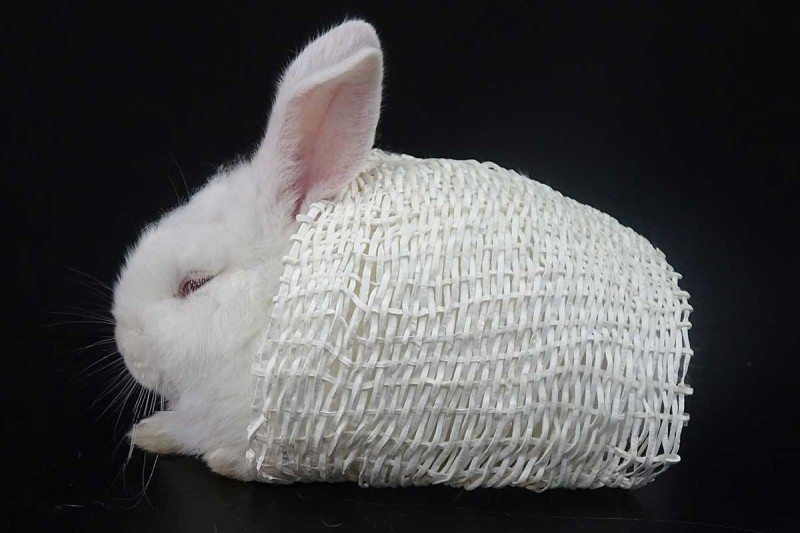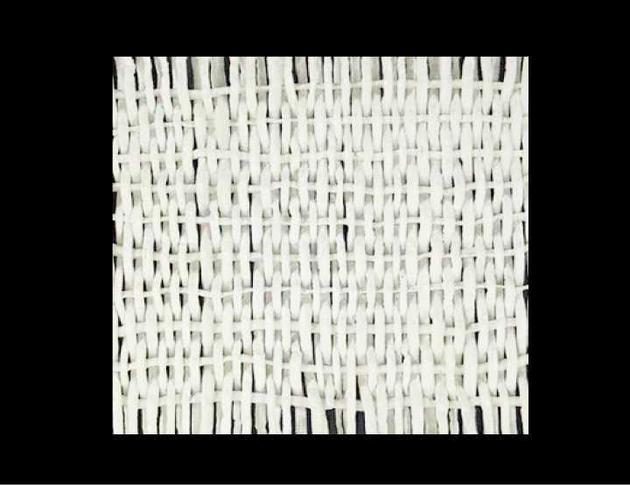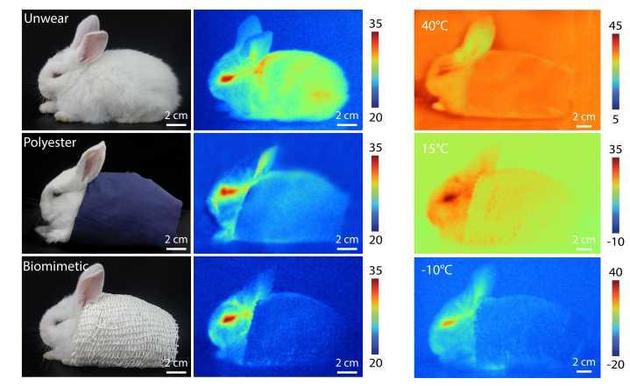ZJU scientist develops new fabric inspired by polar bear hair
The thick pelt that helps polar bears to survive frigid Arctic winters has inspired a warm, sturdy fiber. Inspired by the microstructure and thermal insulation function of the polar bear hair, a research team led by Professor BAI Hao with ZJU’s College of Chemical and Biological Engineering has used a freeze-spinning technique to continuously fabricate silk fibroin solution into a fiber with aligned porous microstructure.

A bunny covered in fabric that mimics a polar bear's fur
The textile woven with the biomimetic fibers has a remarkable thermal insulation, active electroheating capacity when doped with carbon nanotubes (CNTs), good wearability and breathability, making it a promising material for thermal insulation and personal thermal management.
This work was published in the February 14 issue of Advanced Materials (“A Thermally Insulating Textile Inspired by Polar Bear Hair”) and has been reported in Nature, New Scientist and Journal of the American Chemical Society.
The core of a polar-bear hair consists of a sponge-like network of hollows, which help to make it a superb insulator. “Many a pore seals air. When air is static, heat convection cannot take place, thereby reducing the loss of heat,” Bai explains.

A close look at the new fiber
The team develops a “freeze-spinning” method to realize continuous and large-scale fabrication of fibers with an aligned porous structure, mimicking polar bear hairs, which is difficult to achieve by other methods. The textile woven with such biomimetic fibers displays a unique thermal insulation property as well as impressive breathability and wearability.
In addition to passively insulate heat losses, the textile could also function as a wearable heater, when doped with electroheating materials such as carbon nanotubes (CNTs), to induce fast thermal response and uniform electroheating while maintaining its soft and porous nature for comfortable wearing.
“Generally speaking, porous materials tend to be fragile and brittle, but this orderly configuration will render a high degree of strength,” Bai adds. He thinks that it is one of the essential qualities for wearable textile.

Wearing the fabric, the bunny becomes invisible to infrared imaging.
This biomimetic fiber shows a promising future. We may wear a diaphanous “sweater” instead of thick coats in winter in the not-too-distant future; soldiers can successfully evade infrared detection while wearing a thermal invisible coat.
“Mimicking polar bears in terms of insulation is the first step of our research,” Bai says. “The ultimate goal of biomimetics is to develop materials with better properties inspired by nature. We have made several attempts. For example, by adding carbon nanotubes to fiber, we have developed a portable blanket which can be heated to over 10o Celsius in seconds.”
Scientists predict that materials that confer such thermal invisibility could have both extensive industrial and military applications.